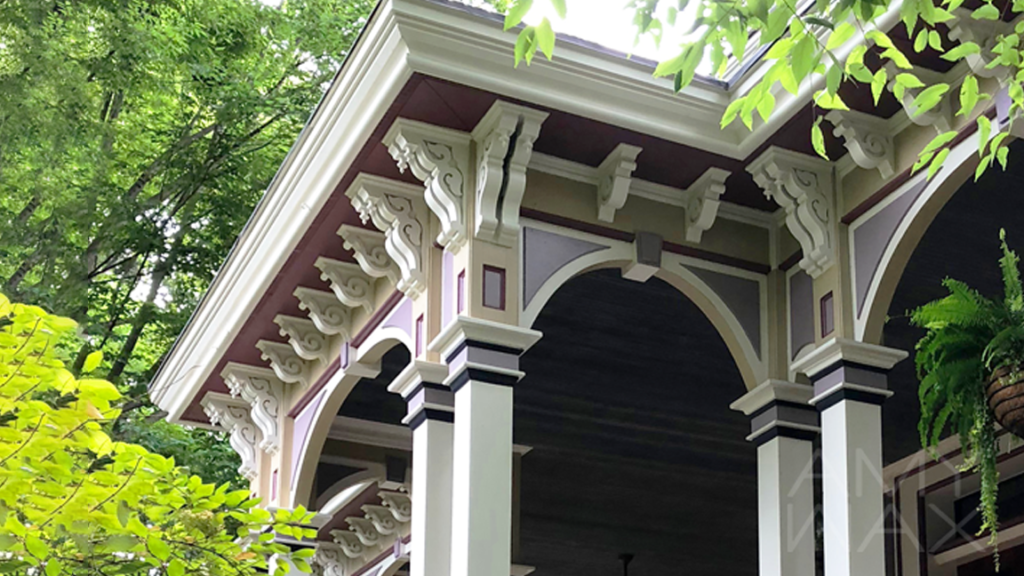
Beautiful Victorian homes have a following and fanbase that are extremely dedicated and enthusiastic. I get it! Victorians are wonderful pieces of functional, living art and history. It’s hard not to fall in love with a Victorian. Each home has its own story and authority, and American Victorian homes are a treasure to behold in all the country’s regions. As a color expert, I also get excited by the site of a Victorian home and Victorian colors!

This article will discuss what characteristics Victorian homes have that homeowners and historians just adore and what classic victorian color palettes make the most dramatic impact on passersby.
The Victorian Era get’s its title from Queen Victoria herself, who reigned from 1837-1901. The 63 years of the Victorian Era are often associated with great innovation in technology, art, and culture.
Some of the more notable advancements and people of the Victorian era include:
In regards to Victorian homes, they were the offspring of new technologies, design, and ornamentation. Not only were Victorian homes uniquely designed, but they had features that society considered technical marvels for their time. The industrial revolution was taking hold across the United States, and homes were built to reflect the best engineering possible for residential homes.

Homeowners and history enthusiasts love Victorian homes because they represent a monumental time in history. When they are well taken care of, you can feel that sense of history as if it is still alive today!
One trendsetter put his design stamp on the classic Victorian color scheme for exterior color palettes, Andrew Jackson Downing. Downing was more of a horticulturalist and landscape architect than a color specialist or contractor; however, his ideas about color palettes for Victorian homes have lasted for over 150 years and continue to be very popular for Victorians and even other styles of homes!
Downing believed in the power of the color found in our natural surroundings and that Victorian homes should incorporate these colors into their exteriors, unadulterated. This is why so many Victorian homes opt for a muted color palettes comprised of taupes, browns, olives, ochre, and deep greens.
Also, it was more expensive to create bright and elaborate color pigmentations back then for paint, so it was also more cost-effective to grind up natural elements such as plant life, barks, and rocks (yes, rocks!) from the surrounding areas to blend into the paints. Downing’s love of plant life and unaltered colors makes sense as he was a landscape architect, but there was also a resistance to muted colors on Victorians as well.
In the 1870s/1880s, Victorians would see a popular movement of richer color palettes to act as counter-culture to the Downing-style color palettes. We all know that Victorian palettes have taken on a look all their own, whether they are the muted colors of the true Victorian period or a later color palette showing off all the details on these grand old homes with contrasting colors!
One of the more famous examples of colorful Victorians are the houses on Nob Hill in San Francisco, which would later be coined as the “painted ladies.” A great New England example of colorful Victorian homes would be the McKnight District in Springfield, MA, which saw many beautifully colorful Grand Victorians built in the 1870s.
I’ll admit, I love Victorian homes, and many of my clients are Victorian homeowners. I designed the color palette you see on the Victorian in the featured image for this post!
When you walk in front of a line of beautiful Victorian homes with distinct color palettes, there’s almost a spiritual power about them. They’re regal, elegant, and timeless.
Does our fascination with Victorians stem from a need to see marvelous craftsmanship meticulously cared for? Is it the desire to honor history and also keep it alive? I feel it’s all of these desires that keep us longing after and loving Victorian homes.
Please share your thoughts on Victorian homes and Victorian colors! Please reach out to me with any questions.